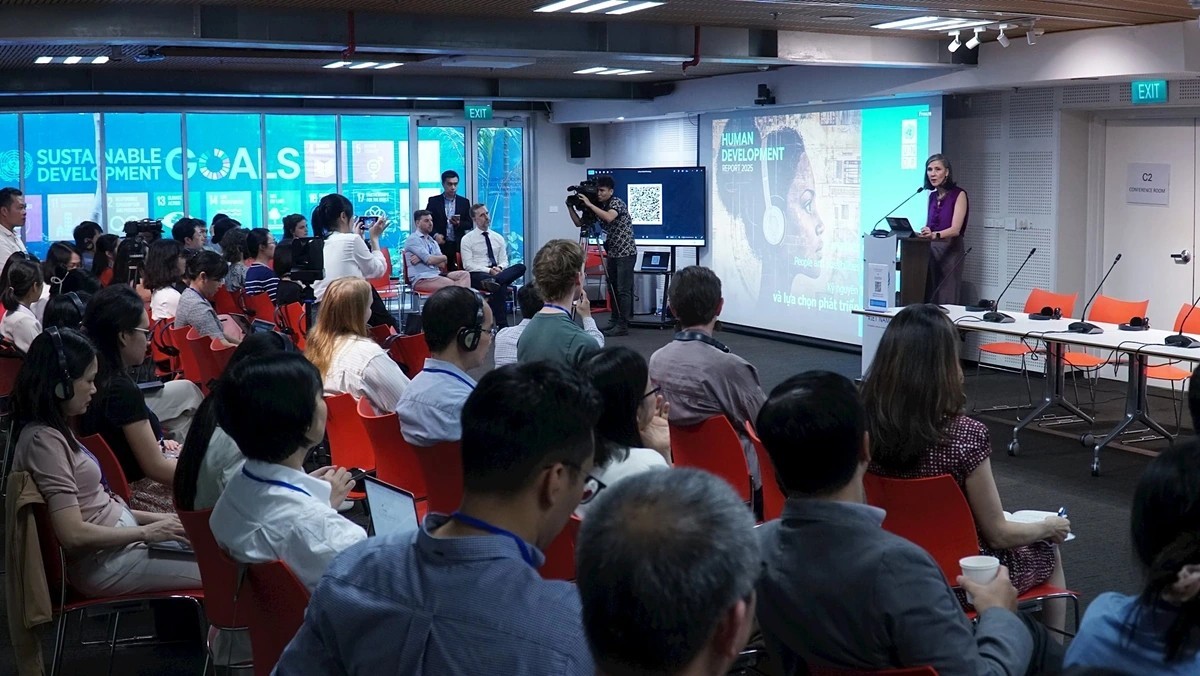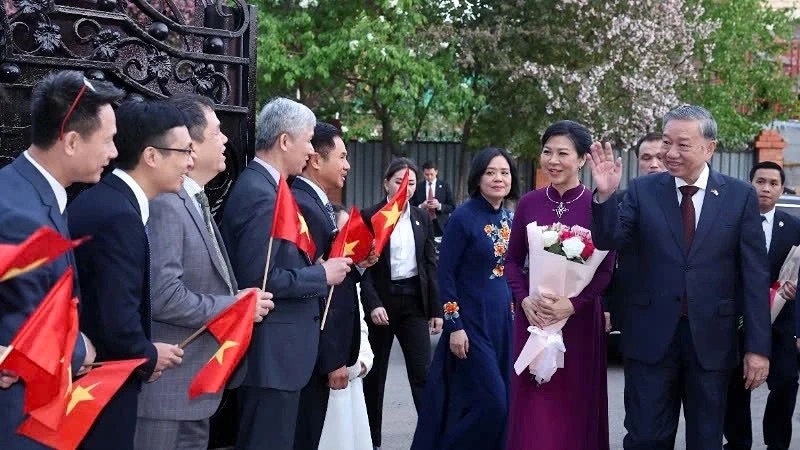Vietnam strives to reduce sex imbalances at birth
A ceremony was held in the north central province of Thanh Hoa on October 9 in response to International Day of the Girl Child (October 11), focusing on the theme of no sex discrimination and no selection of unborn babies.
 |
At the ceremony. (Photo: giadinh.net.vn)
The event was co-organised by the Vietnamese Ministry of Health, the United Nations Population Fund (UNFPA) in Vietnam, the European Union (EU) Delegation to Vietnam and the People’s Committee of Thanh Hoa province.
Addressing the event, Vo Thanh Dong, Deputy General Director of the Health Ministry’s General Office for Population and Family Planning, called on ministries, agencies and people from all walks of life to join efforts in controlling and reducing gender imbalances at birth in Vietnam.
Actions that guide the sex determination and selection must be banned at medical centres and in society, he said.
Statistics show that sex imbalances at birth in Vietnam increased from 107 boys per 100 girls in 1999 to 110.5 in 2009, 113.8 in 2013 and 112.2 at present. The imbalances are increasing and spreading in all areas and regions nationwide.
Up to 55 out of 63 cities and provinces have sex ratio at birth exceeding 108 boys per 100 girls. In Thanh Hoa province, the ratio was 111 in 2009 and 114 in 2017, higher than the country’s average.
Sex imbalances at birth in Vietnam are mainly caused by the longstanding habit of preferring males to females. Besides, the direct cause of the imbalance is the abuse of medical technology by families wishing to know the gender of their unborn child and choosing to continue the pregnancy only if they are carrying a child of the gender they want - generally, a boy.
Public awareness of gender inequality has grown but many people still have skewed perceptions of gender roles and want a son to continue their family name.
This is also the main reason for an increased rate of third-child births.
The imbalanced sex ratio at birth will negatively affect Vietnam’s population structure in the future, resulting in an excess of men. Further, this imbalance could have grave consequences for the country’s socio-economic development and for the well-being of women, men, families and communities.
Vietnam is expected to lack from 2.3-4.3 million women by 2050 if no prompt interventions are taken.
International Day of the Girl Child aims to highlight and address the needs and challenges girls face, while promoting girls' empowerment and the fulfillment of their human rights.
Since 2012, October 11 has been marked as the International Day of the Girl Child. The day aims to highlight and address the needs and challenges girls face, while promoting girls' empowerment and the fulfillment of their human rights.
Under the theme, With Her: A Skilled Girl Force, this year’s International Day of the Girl Child will mark the beginning of a year-long effort to bring together partners and stakeholders to advocate for, and draw attention and investments to, the most pressing needs and opportunities for girls to attain skills for employability.
Ealier, through their own stories in daily life, 100 girl representatives attending the recent National Forum on Girls 2018 have raised a call to protect girls in public places and end child marriage.
Taking place under the theme ‘Promoting girls’ rights for changes and development’, the National Forum on Girls also attracted the participation from leaders of a number of National Assembly (NA) committees, ministries, sectors and social organisations.
Focusing on two major topics of “Girls’ safety in rural areas” and “Child marriage and its consequences”, the participants shared their opinions on the situation and challenges facing millions of Vietnamese girls in public places, on their way to school and throughout stages of growing./.
VNF/VNA
Recommended
 National
National
Vietnam News Today (May 13): Vietnam Maintains High Human Development Index Despite Global Slowdown
 National
National
Vietnam News Today (May 12): Party General Secretary Meets With Russian Experts, Intellectuals
 National
National
Vietnam News Today (May 11): Vietnam, Austria to Boost Cooperation in High-Tech Development, Innovation
 National
National
Vietnam News Today (May 10): Vietnamese Peacekeepers Honored with UN Medal in South Sudan
Popular article
 National
National
Vietnam News Today (May 9): Vietnam Ready to Work With Russia to Elevate Relations
 National
National
Vietnam News Today (May 8): Vietnam Remains Committed to UNCLOS
 National
National
Vietnam News Today (May 7): Vietnam Hosts Over 7.67 Million International Visitors in First 4 Months
 National
National



